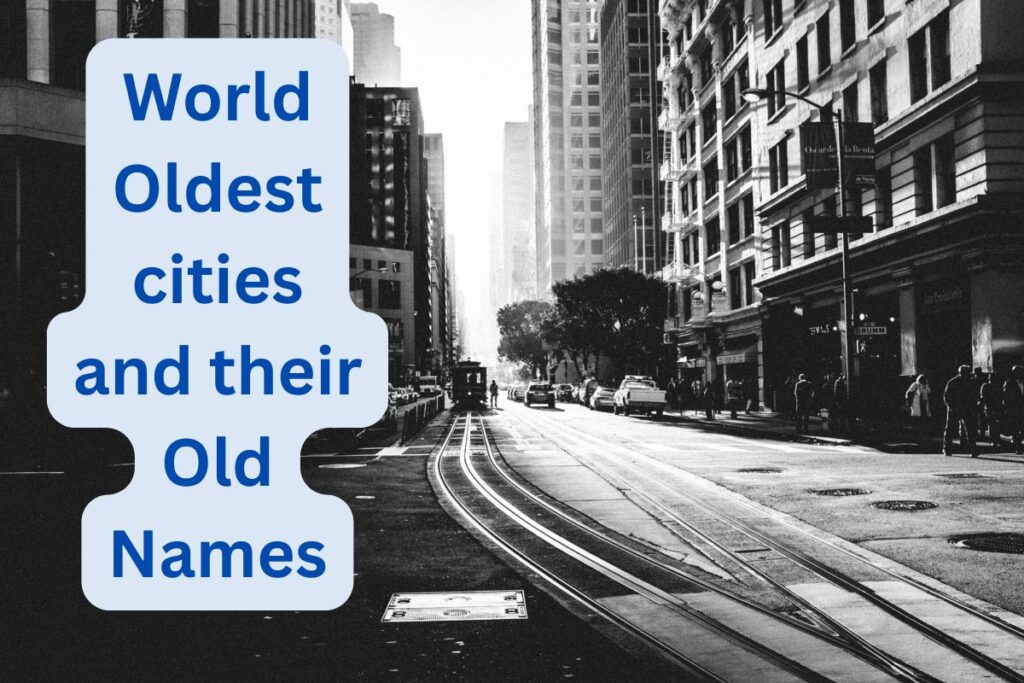Imagine traveling back in time and telling someone you’re headed to Mumbai—they’d look puzzled and say, “You mean Bombay?”
Or casually dropping that you flew into Ho Chi Minh City—only to be corrected by a local, “We still call it Saigon.”
Yes, cities change names—sometimes quietly, sometimes dramatically—and each change tells a story. Some names were shed like old skin after independence. Others were swapped during revolutions, colonization, or in honor of national heroes.
Let’s hop across continents and explore some famous cities that weren’t always called what they are today. You’ll be surprised at how much history is tucked behind these signs and skylines.
Istanbul – Once Constantinople, and even before that… Byzantium
You know the song, “Istanbul was Constantinople…”?
Well, it’s not just catchy—it’s true.
This Turkish megacity has worn many crowns: first as Byzantium, then Constantinople, the glorious capital of the Byzantine and later the Ottoman Empire. It wasn’t until 1930 that it officially became Istanbul.
Fun fact: “Istanbul” comes from a Greek phrase that meant “to the city”—as if there were no other city that mattered. Fair enough.
Mumbai – Formerly Bombay
If you’ve been to India, you’ve heard both names used interchangeably. But Mumbai reclaimed its original Marathi name in 1995 to honor the local goddess Mumbā Devi and move away from colonial influence.
While the name Bombay still echoes in Bollywood and business, Mumbai is the name that beats in the heart of the city.
Beijing – Once Peking (And no, it’s not just the duck!)
The capital of China was long known as Peking, thanks to old British transliterations. But with the adoption of pinyin (modern Chinese Romanization), it became Beijing, meaning “Northern Capital.”
So yes, it’s the same city—just spelled the way it’s actually pronounced!
Ho Chi Minh City – Formerly Saigon
After the Vietnam War ended, the victorious communist government renamed Saigon to honor revolutionary leader Ho Chi Minh in 1976.
But here’s the twist: locals still call it Saigon. From coffee shop menus to taxi drivers, the old name lives on in everyday life.
New York City – Once Called New Amsterdam
Yes, the Big Apple was once a Dutch settlement called New Amsterdam. That is, until the British sailed in and renamed it New York in 1664, after the Duke of York.
Imagine if it had stayed New Amsterdam—would Broadway have been full of tulips and windmills?
Bangkok – Krung Thep, If You Ask a Local
The world calls it Bangkok, but Thai people call it Krung Thep—short for its official name, which is the longest city name in the world (seriously, look it up!).
This ancient city of temples, tuk-tuks, and tasty street food is hiding behind an international alias.
Jakarta – Once Batavia
Indonesia’s capital was known as Batavia during Dutch colonial rule. After gaining independence in 1945, it was renamed Jakarta, reflecting its indigenous and anti-colonial roots.
Chennai – Formerly Madras
India’s southern metropolis was called Madras under British rule. In 1996, it was renamed Chennai to align with Tamil heritage and linguistic pride.
Like Mumbai, Chennai is part of India’s broader movement to shed colonial legacy and embrace native identity.
Saint Petersburg – From Tsars to Soviets and Back Again
This Russian beauty has had a bit of an identity crisis:
- Saint Petersburg (original name)
- Renamed Petrograd in 1914
- Then Leningrad after Lenin’s death
- Back to Saint Petersburg in 1991 after the USSR collapsed
Whew! All that political drama and still stunning architecture.
A Few More You Might Know…
| Now Called | Formerly Known As | Country |
| Kolkata | Calcutta | India |
| Harare | Salisbury | Zimbabwe |
| Kinshasa | Léopoldville | DR Congo |
| Seoul | Hanseong / Gyeongseong | South Korea |
| Tehran | Ray | Iran |
| Oslo | Christiania | Norway |
So, Why Do Cities Change Their Names?
It’s not just a rebrand. It’s usually tied to something deeper:
- Breaking from colonial history
- Honoring cultural or political figures
- Reclaiming native languages
- Reflecting a new national identity
Sometimes, it’s symbolic. Other times, it’s revolutionary.
Final Thoughts: What’s in a Name? Everything.
A city’s name is more than what we type into Google Maps—it’s a window into its past and a statement about its future.
So next time you’re booking a flight or reading history, look a little deeper. You might discover that the city you know and love used to answer to a different name entirely.
